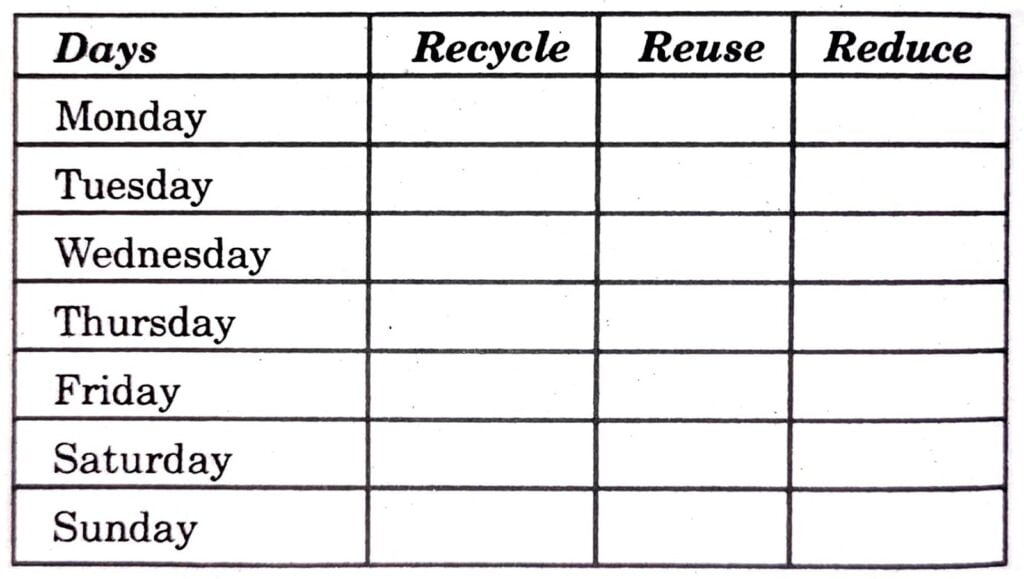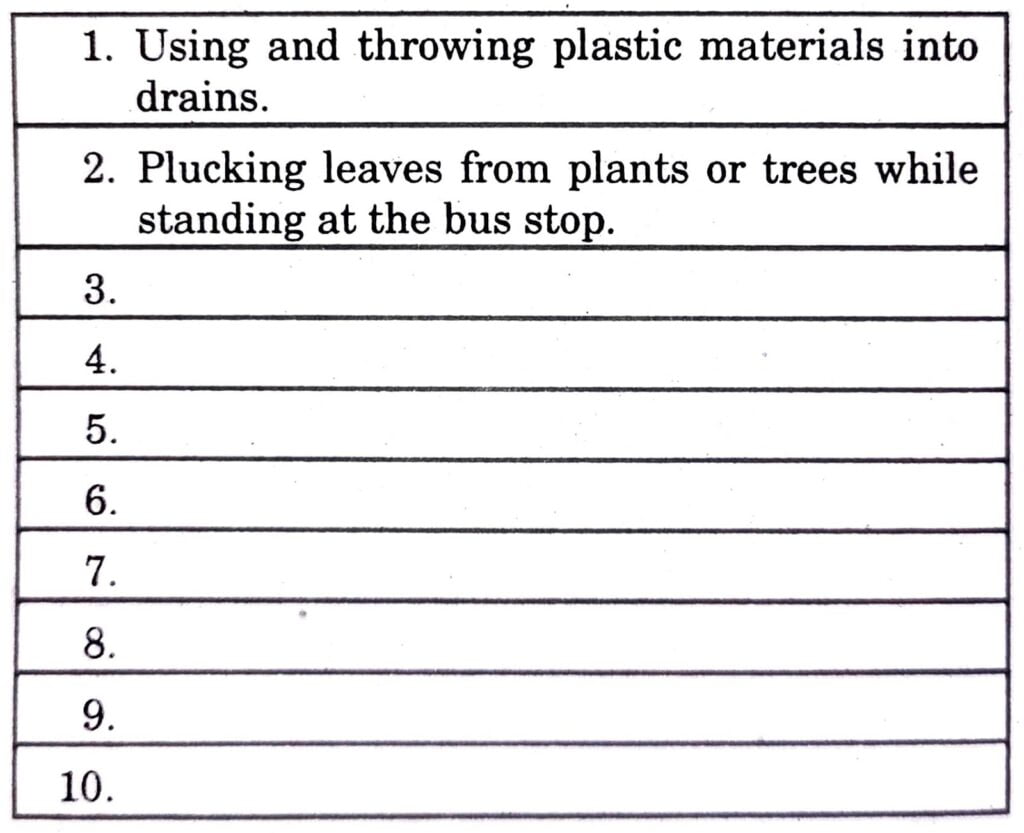NIOS Class 10 Social Science Chapter 26 Environmental Degradation and Disaster Management Solutions to each chapter is provided in the list so that you can easily browse through different chapters NIOS Class 10 Social Science Chapter 26 Environmental Degradation and Disaster Management and select need one. NIOS Class 10 Social Science Chapter 26 Environmental Degradation and Disaster Management Question Answers Download PDF. NIOS Study Material of Class 10 Social Science Notes Paper 213.
NIOS Class 10 Social Science Chapter 26 Environmental Degradation and Disaster Management
Also, you can read the NIOS book online in these sections Solutions by Expert Teachers as per National Institute of Open Schooling (NIOS) Book guidelines. These solutions are part of NIOS All Subject Solutions. Here we have given NIOS Class 10 Social Science Chapter 26 Environmental Degradation and Disaster Management, NIOS Secondary Course Social Science Solutions for All Chapters, You can practice these here.
Environmental Degradation and Disaster Management
Chapter: 26
SOCIAL SCIENCE
TEXT BOOK QUESTIONS WITH THEIR ANSWERS
INTEXT QUESTIONS 26.1
Q. 1. Put the following into biotic and abiotic groups: Plants, Water, Soil, Animals, Fire, Microbes, Topography, Bacteria.
Ans:
| Biotic | Abiotic |
| Plants | Water |
| Animals | Soil |
| Microbes | Fire |
| Bacteria | Topography |
Q. 2. Fill in the blanks with appropriate words:
(a) Environment can be classified into ________ and ________.
Ans: Natural, human made.
(b) The classification of environment can also be made on the basis of its ________.
Ans: Creation or evolution.
(c) Road, buildings and school are parts of ________ environment.
Ans: Human made.
(d) Environment is dynamic because ________.
Ans: It changes were period of time and space.
Q. 3. Activity – Make a list of things around you and classify them into two categories. In the first category mention those things that are essential for your living and in the second category put those things that you can live without.
Ans: Self attempted.
INTEXT QUESTIONS 26.2
Q. 1. Fill in the blanks with appropriate words:
(a) When habitats are destroyed _________ is lost.
Ans: Biodiversity.
(b) Modern gadgets release _________ and causes _________.
Ans: Harmful gasses, global warming.
(c) Extensive use of fertilizers and pesticides have been a major source of _________ and _________.
Ans: Contamination of water bodies, land degradation.
(d) One of the biggest causes of environ- mental degradation is generation of _________.
Ans: Solid waste.
Q. 2. What is disaster? Give one example.
Ans: A disaster is a tragedy that effects society and environment in negative way. It is seen as the consequences of in- appropriately managed risk.
Example: (i) Landslides is an example of natural disaster.
(ii) Bhopal Gas Tragedy is an example of man-made disaster.
Q. 3. Activity: Garbage survey
For waste management, it is necessary that we collect the wastes for disposing them off in three ways and take the needed steps, i.e., recycle or reuse or reduce them. In this context you have to observe what type of waste is disposed of in your house/area/colony? Carry out a weekly survey in your house/area/locality in the following format and write which of the wastes can be recycled, reused or reduced:

Write in the above table the names of garbage generated in your house on each day of the week. After one week, see which type of garbage is generated the most. Try to reuse or reduce as explained in the lesson above. Do the same exercise for another week and compare the results of two weeks. You may find that the garbage under ‘Reduce’ has decreased substantially.
Ans: Students will carry out the survey themselves and complete the given table.
Q. 4. List the activities by which we degrade the environment.

Ans: Students will do this activity themselves.
TERMINAL EXERCISES
Q. 1. What is meant by environ- ment? Explain it with the help of an example.
Ans: Anything that surrounds us is known as our environment. See the given figure. A couple is walking, and playing with their two children in surrounding environment i.e. in a park with lot of trees, flowers, grass and butterflies.

Q. 2. Classify the environment on the basis of evolution. Explain them from the examples of your surroundings.
Ans: Environment can be classified as natural and human made environment on the basis of its evolution or creation.
Natural environment included all our natural surroundings or non-living and livings things which are naturally available on the surface of the earth.
Human made environment consists of all the buildings, but by humans in our surrounding.
Q. 3. “Environment is dynamic in nature and keeps on changing.” Substantiate this statement with example.
Ans: Environment is dynamic in nature and keeps on changing. Both of its elements biotic and abiotic are also dynamic nature. These are different from place to place and one place to another. If you observe the evolution of an environment at a place over the period of five to ten years or so, you will find a lot of changes on it. These changes occur naturally as well as human beings interference in her surroundings. Thus, environment is dynamic in nature, but keeps on change as the time passes away.
Q. 4. Discuss in brief the importance of environment.
Ans: Importance of Environment:
(i) It is our basic support system.
(ii) It is key to our welfare and survival.
(iii) It effects and influences the growth, development and survival of the organisms.
(iv) We depend on the environment for our food, shelter, water, soil, energy etc.
(v) It maintains the ecological balance.
(vi) It maintains atmospheric composition.
Q. 5. Define environmental degra-dation. Explain the factors causing environmental degradation.
Ans: Environmental degradation is a process by which our environment is progressively contaminated, over exploited and destroyed. So we can say environment degradation is the deterioration of the environment through depletion of natural resources.
Causes:
(i) Social Factors: Social factors which are responsible for environment degradation are
(a) Population growth.
(b) Poverty.
(c) Urbanization. and
(d) Changing lifestyle.
(ii) Economic Factors: Economic factors which are responsible for environ- mental degradation are:
(a) Agricultural Development.
(b) Industrialisation.
(c) Economic Development.
Q. 6. Suggest any three ways to save our environment.
Ans: Three ways to save our environment are:
(i) Always use and promote eco-friendly and biodegradable products.
(ii) Segregate home garbage to facilitate the recycling process.
(iii) Demand eco-friendly refrigerator and air conditioning which do not use CFCs.
Q. 7. List at least ten activities by which human beings have been degrading the environment.
Ans: Self attempt.
Q. 8. Classify the disaster on the basis of their origin.
Ans: On the basis of their origin disaster can be classified as:
(i) Natural Disaster.
(ii) Man-made Disaster.
Q. 9. What is meant by Disaster Management? How can we minimise the adverse effects of disasters?
Ans: Disaster Management is an effort made to minimize the adverse effects of natural and man-made disasters by adopting suitable strategies.
These suitable strategies involve to minimize disaster impact are:
(i) Mitigation.
(ii) Preparedness.
(iii) Response.
(iv) Recovery.
SOME OTHER IMPORTANT QUESTIONS FOR EXAMINATION
MULTIPLE CHOICE QUESTIONS
1. Which is an example of abiotic environment?
(a) Sunlight.
(b) Human beings.
(c) Plants.
(d) Animals.
Ans: (a) Sunlight.
2. Which of the following is not an example of natural environment?
(a) Soil.
(b) Water.
(c) Train.
(d) Land.
Ans: (c) Train.
3. Tick the odd one.
(a) Buildings.
(b) Houses.
(c) Bridges.
(d) Plant.
Ans: (d) Plant.
4. Which is not an example of human made environment?
(a) Bridges.
(b) Industries.
(c) Agricultural field.
(d) Rivers.
Ans: (d) Rivers.
5. What is the full form of UNEP?
(a) United Nations Environment Programme.
(b) United Nations Environmental Progress.
(c) Union of Nation Environmental Progress.
(d) None of these.
Ans: (a) United Nations Environment Programme.
6. Which is a major contributory factors for the development and major causes of environmental degradation?
(a) Poverty.
(b) Economic growth.
(c) Growing population.
(d) Changing lifestyle.
Ans: (c) Growing population.
7. Which economic factor is responsible for environmental degradation?
(a) Industrialisation.
(b) Economic development.
(c) Industrialisation.
(d) All of these.
Ans: (d) All of these.
8. Which is not included in 3 Rs?
(a) Recycle.
(b) Reuse.
(c) Reduce.
(d) Refuse.
Ans: (d) Refuse.
VERY SHORT ANSWER TYPE QUESTIONS
Q. 1. What is environment?
Ans: Anything that surround us is known as environment.
Q. 2. What is natural environment?
Ans: The environment occurring naturally on the earth which may includes both living and living things is called natural environment.
Q. 3. What do you meant by human- made environment?
Ans: The things which are created by human for their uses with the available technology to satisfy their needs is known as human-made environment. Buildings bridges, means of transport etc. are the part of human made environment.
Q. 4. Name social components of the environment.
Ans: Men, family, religion, community, education, technology etc. are the components of our environment.
Q. 5. What is environmental degra-dation?
Ans: Environmental degradation is process by which air, water and land are progressively contaminated, over-exploited and destroyed.
Q. 6. What are social factors responsible for environmental degra- dation?
Ans: Social factors responsible for environmental degradation are:
(i) Growing population.
(ii) Poverty.
(iii) Urbanization.
(iv) Changing Lifestyle.
Q. 7. What is sustainable Develop- ment?
Ans: The development that meets the needs of the present generation without compromising the ability of future generation to meet their own needs is termed as sustainable development.
Q. 8. Define a disaster.
Ans: A disaster may be defined as a tragedy that negatively affects the society and environment.
Q. 9. What are the two types of disaster on the basis of their origin?
Ans: On the basis of origin disasters are of two types: These are:
(i) Natural Disaster.
(ii) Man-made Disaster.
Q. 10. What is Disaster Management?
Ans: It is the strategies which minimize the adverse effects of the both natural and man-made disasters.
Q. 11. What are the four phases of disaster management?
Ans: (i) Mitigation.
(ii) Preparedness.
(iii) Response.
(iv) Recovery.
Q. 12. Who is the first responder to a disaster?
Ans: Community is the first responder of a disaster.
Q. 13. What is the main aim of Recovery phase?
Ans: The main aim of the Recovery phase is to restore the effected area to its previous state.
Q. 14. What is mitigation?
Ans: Mitigation is a technical term which means the efforts made to prevent the hazard into a disaster.
Q. 15. Write the full forms of:
(i) WRI
(ii) UNEP
Ans: (i) WRI: World Resource Institute.
(ii) UNEP: United Nations Environment Programme.

Hi! my Name is Parimal Roy. I have completed my Bachelor’s degree in Philosophy (B.A.) from Silapathar General College. Currently, I am working as an HR Manager at Dev Library. It is a website that provides study materials for students from Class 3 to 12, including SCERT and NCERT notes. It also offers resources for BA, B.Com, B.Sc, and Computer Science, along with postgraduate notes. Besides study materials, the website has novels, eBooks, health and finance articles, biographies, quotes, and more.



